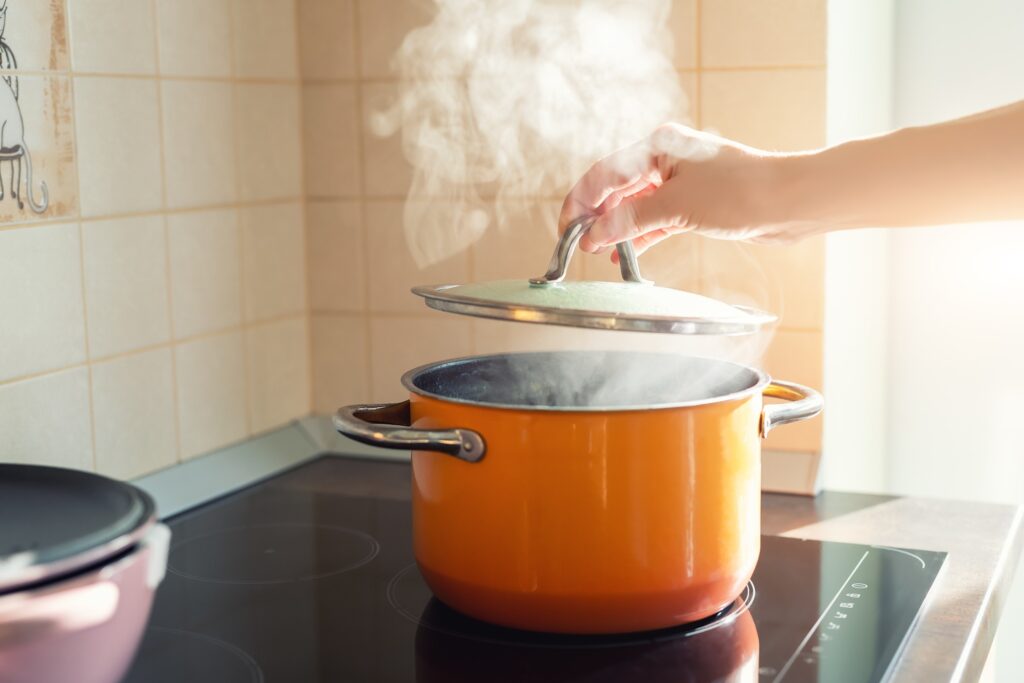Scald Burns and How to Avoid Them

When most people think about burn injuries, they think about burns caused by fire. Scald burns, which are burns caused by hot liquid or steam, are often overlooked. This is why the American Burn Association (ABA) is using National Burn Awareness Week (February 5-11, 2023) to promote ways to prevent scale injuries. The personal injury lawyers at Patterson Legal Group want to support the ABA’s efforts and offer the following scald burns prevention tips to help keep your family safe.
Avoiding Scald Burns in the Kitchen
It’s no surprise that the majority of household burn injuries take place in the kitchen. The range, oven, and microwave heat up all sorts of foods and sauces, which leads to steam and hot liquids. While your chances of getting scalded are higher in the kitchen, the majority of cooking accidents are easily preventable. The following safety tips will help you and your family avoid burns:
- Always use gloves and pot holders when possible: cooking can be imprecise. Pots and pans can heat up unevenly. Different burners on the range can work at different accuracy levels. This can cause hot spots and uneven heating, which can cause liquids to splash. Wearing gloves and using pot holders as much as possible will help prevent scald burns.
- Open lids and containers away from your body: whether you’re boiling pasta on the range of heating up leftovers in the microwave, always open lids and containers away from your body. Steam is often hotter than you think it will be and liquids can suddenly splash out of a container. It’s best to direct these things away from, rather than risk a scald injury.
- Do not multitask when hot liquids are being handled: one of the most common mistakes in the kitchen is trying to multitask while handling hot liquids. This can be dangerous to you and anyone else in the kitchen. If you’re moving a hot pot or kettle then take a moment to give it your full attention. Similar to how a second of distraction can lead to a car accident, a second of distraction can lead to a scald burn.
Avoiding Scald Injuries in the Bathroom
After the kitchen, the bathroom is the next most common room for scald burns. And just like kitchen burns, these injuries are highly preventable. Most burn injuries in the bathroom are caused by carelessness while using a bathtub or shower. To help keep your family safe from bathroom burn injuries caused by hot water or steam, follow these safety tips.
- Run cold water first, then warm it up: one of the most common mistakes in the bathroom is running hot water before cold. This is an easy way to get scalded. To avoid injuries while using a bathtub, shower, or sink, you should run cold first and then warm it up with hot water.
- Mix the water in the tub before entering: whether you’re about to enjoy a relaxing soak or you’re cleaning up the kids, be sure to give the water a good mix with your arm. Hot spots can form in bath water, especially in large bathtubs. Giving the water a hearty swirl can help make sure that the temperature is uniform, which can help prevent scald injuries.
Contact Patterson Legal Group
The team at Patterson Legal Group hopes that you found the safety tips above helpful. Please share them with your family and friends during National Burn Awareness Week. Unfortunately, some scald injuries happen because of the negligence or recklessness of another party. If you or a loved one were injured in such a manner then contact us for immediate assistance.
You can reach our staff 24 hours a day, 7 days a week to begin your free, no obligation consultation. You can connect with us by phone at (888) 687-2400 and online through LiveChat or encrypted contact form. Patterson Legal Group has more than 75 years of experience representing injury victims in Kansas, Missouri, and Oklahoma. Our attorneys have a long track record of winning high settlements for our clients. For the results you want and customer care that you deserve, give us a call today.





